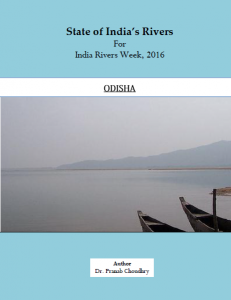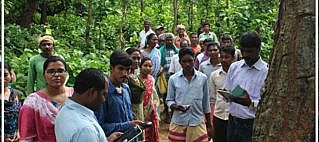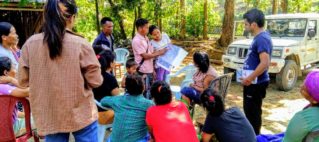 Title: ECOSYSTEM OF DROUGHT
Title: ECOSYSTEM OF DROUGHTSeries: Publications
Published by: Pranab Ranjan Choudhury
Contributors: Pranab Ranjan Choudhury
Pages: 8
Also in this series:
As drought this year touches lives of a quarter of the population of India (in 255,923 villages in 254 districts in 10 states)¹ and debates over drought preparedness and development priorities by the Centre and states are contested in the media and questioned by the Courts (viz. the row over IPL match in Maharashtra), this paper attempts a better understanding of the changing ‘drought ecosystems’ of poor farmers in India and explore whether ‘living with drought’ is possible drawing lessons from the regional adaptive traditions and by questioning the mainstream agricultural trends.
Drought: A Fact and Reality
A hydro-meteorological manifestation², drought is a natural phenomenon, as natural as the climate and its variability. In a country like India, when rainfed agriculture is the dominant food production system and land use, drought remains an inherent accompanier of the farmer, society and the economy³. Irrigated agriculture is no different, as most of the irrigation systems being surface waterbased with links to precipitation.
In the context of climate change, as rainfall is predicted to be more variable in India and dry regions becoming drier, extreme and intense drought events with higher frequencies⁴ are expected. Whether it would be a meteorological drought, a hydrological drought and agricultural drought, this would depend upon causation shifting from rainfall deficiencies through run off deficiencies to the availability of water for crops in the growing season⁵.
Making of a Drought: The Human Influence While drought remains a natural ‘phenomenon’ and technically an event, what makes it a ‘disaster’ or matter of concern, is a combination of factors, which are often man-made. Not denying the fact that there are extreme and perennial droughts, impacts of which may be disconnected from anthropological connection, the fact remains that ‘droughts’ are often man-made. Severe droughts, being experienced of late, can no longer be seen as purely natural hazards, because human activities play a role. Understanding and managing drought require acceptance of human influence as integral to drought is natural climate variability. (Van Loon et al,2016)⁶
Understanding Drought: Proposing a Multidimensional Framework Lens Premised on an acceptance that drought would remain a companion of Indian Agriculture in this profoundly human-influenced era, the Anthropocene⁷, this paper, attempts to explore, if its impact can be minimized on agriculture, food production, rural India and more importantly on the millions of small and marginal farmers, who are most affected by it, through a better multidimensional understanding.
Keeping in forefront the millions of farmers who bear the burnt, this paper adopts a human-angle to propose a comprehensive ‘Ecosystem Framework’ to understand and analyze the drought vulnerabilities of poor, especially the small and marginal farmers in the Indian context. More particularly, it seeks to examine, whether such vulnerabilities have accentuated of late in the liberalized anthropocene, as a result of the development pathway that has been adopted in general⁸ and its influence on the agriculture sector in particular around policy, research, extension and market.
Ecosystem of drought vulnerability framed here, attempts to understand the small farmer’s environment in holistic, multidisciplinary perspectives to analyze how the social, economical and ecological environment around it has changed of late along with the political and cultural mileu and whether the changes have induced higher vulnerabilities? As drought could most usefully be 8 characterized by its impact on the poor farming community and their ecosystem/landscape, this framework argues that the ecosystem of drought framework can probably help in a better appreciation of the quantum of its impact.





